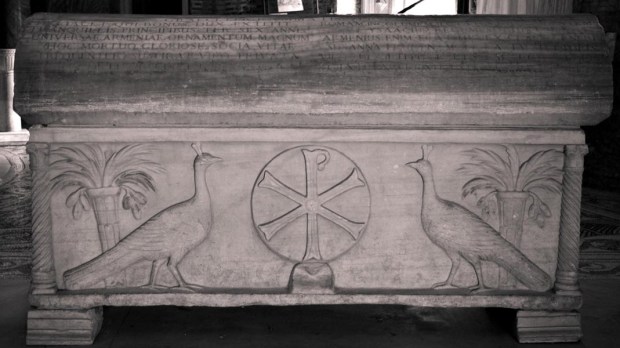Peacocks have captured the imagination of humanity for thousands of years. Even King Solomon was known to possess peacocks as a symbol of his great wealth (see 1 Kings 10:22).
There was an ancient belief that the peacock’s skin was incorruptible and resisted decay even after death. Saint Augustine tested this theory and was surprised at how long it did last, revealing in City of God, “a year later, it was still the same, except that it was a little more shriveled, and drier.”
This strange phenomenon led many cultures in the ancient world to see the peacock as a sign of immortality and for the Christian, a reminder of heaven. The peacock’s feathers, which would molt annually, further solidified the connection and added the spiritual symbol of the resurrection when the peacock would grow new feathers.
Additionally, the eye-shape pattern on the peacock’s feathers reminded Christians of the all-seeing eye of God.
For these reasons peacocks were found frequently in Christian catacombs and churches and featured prominently on tombs, being a perfect symbol of eternal life and the immortality of the soul.

